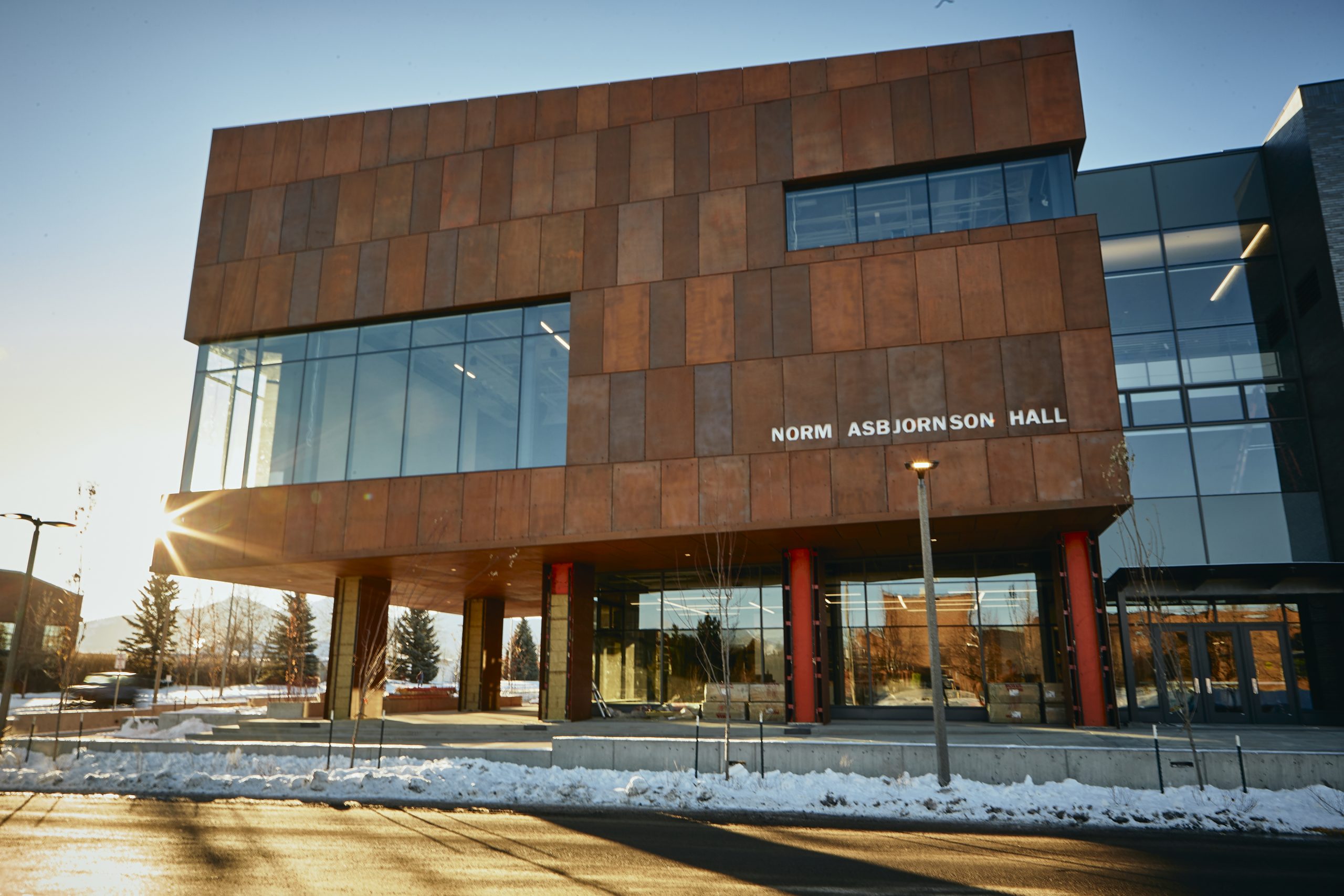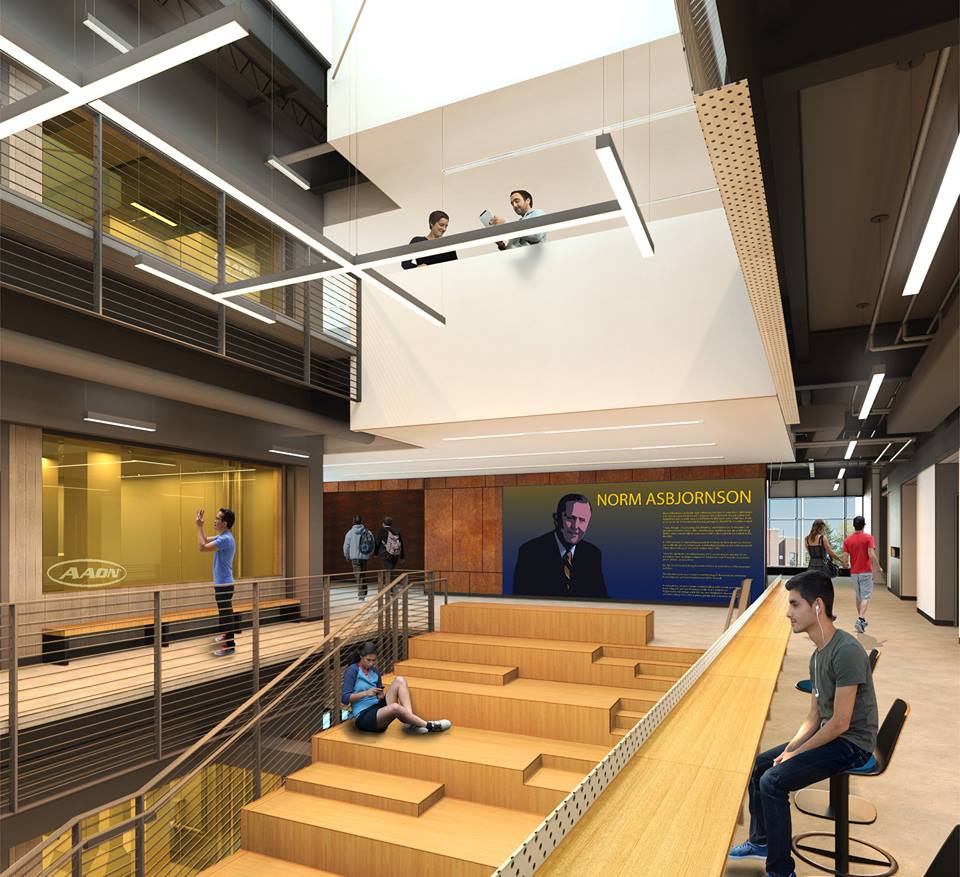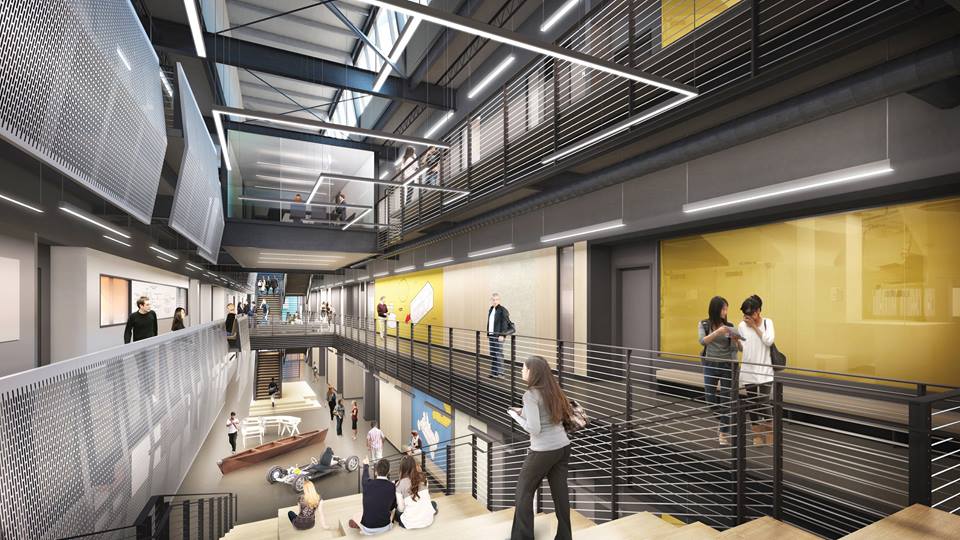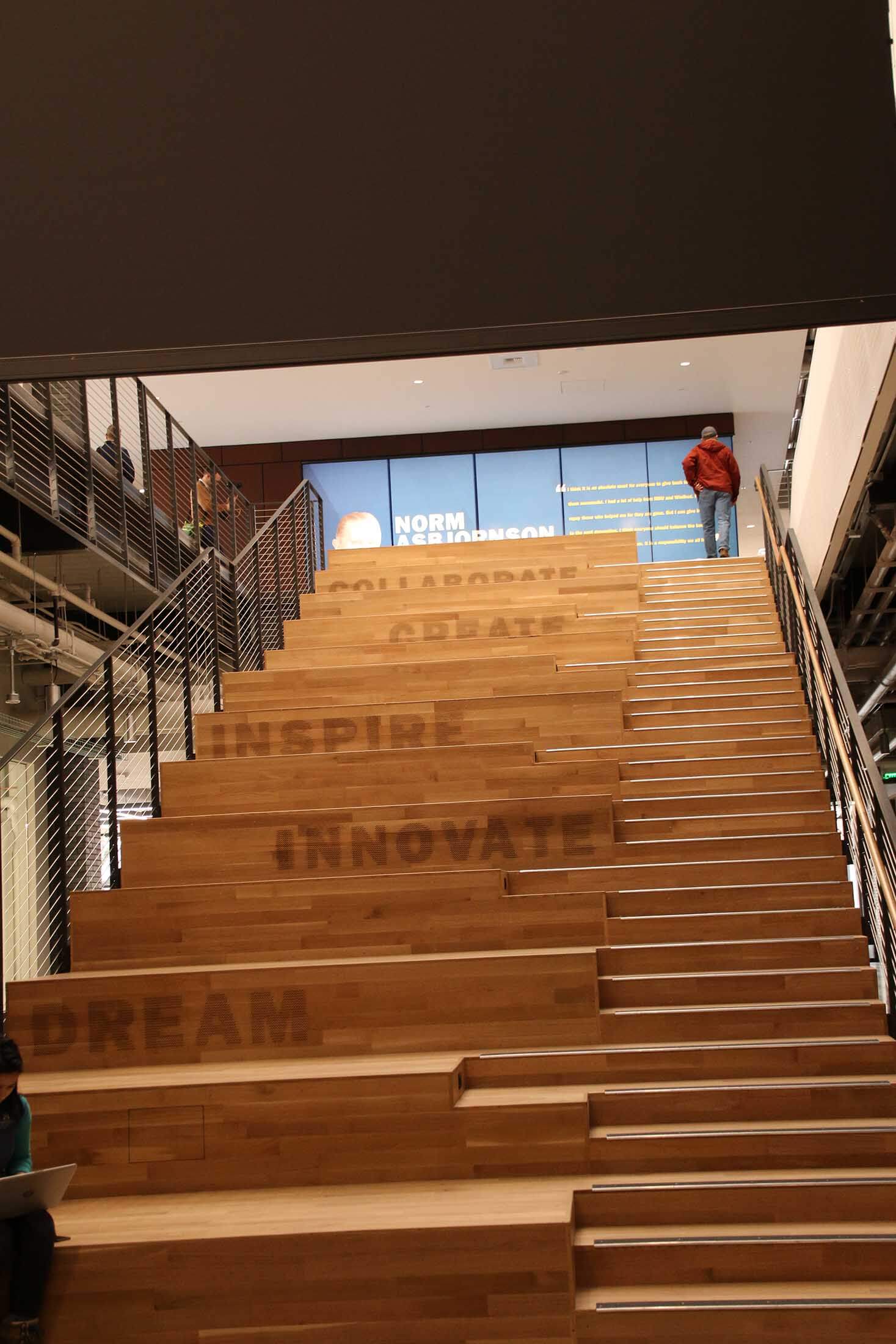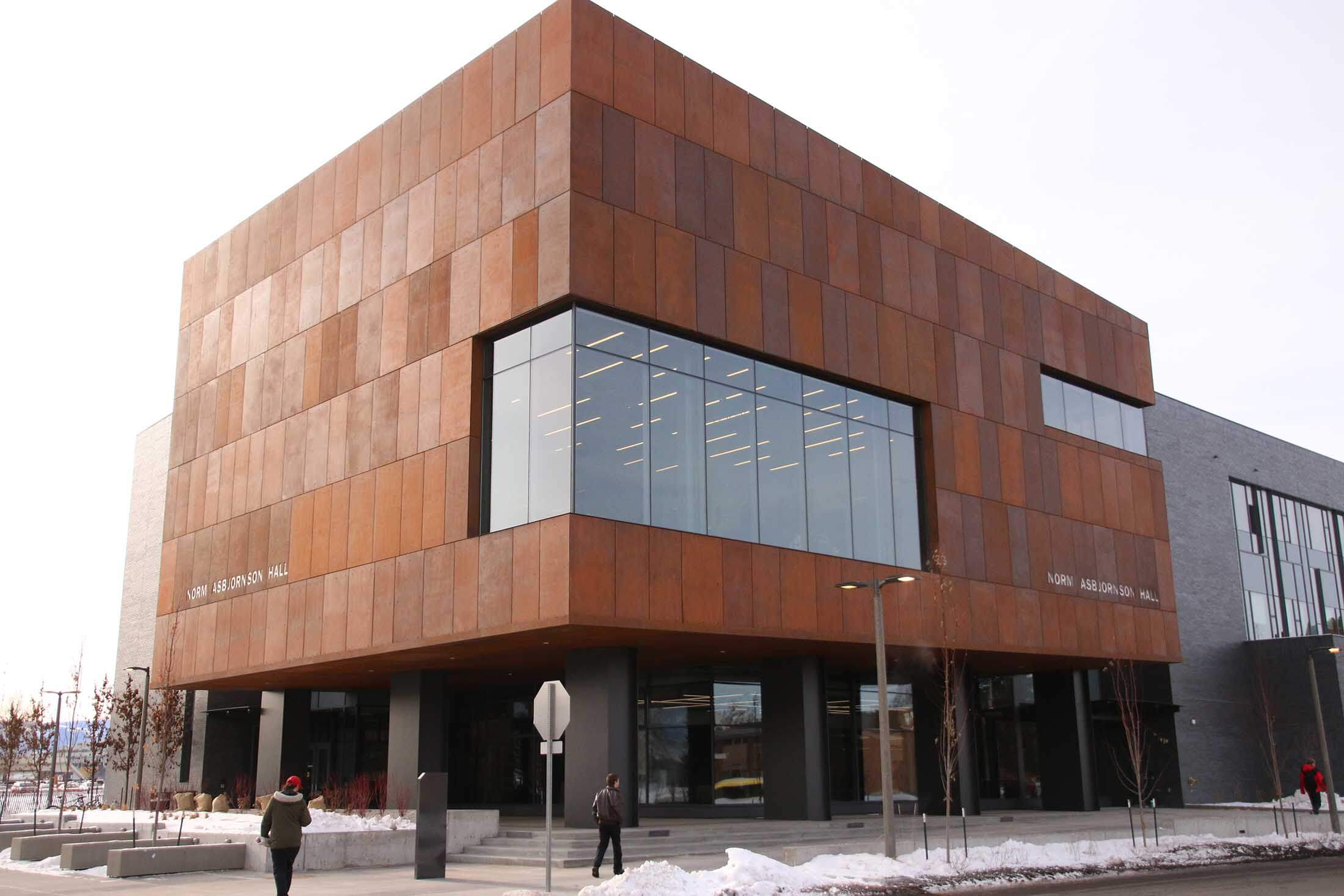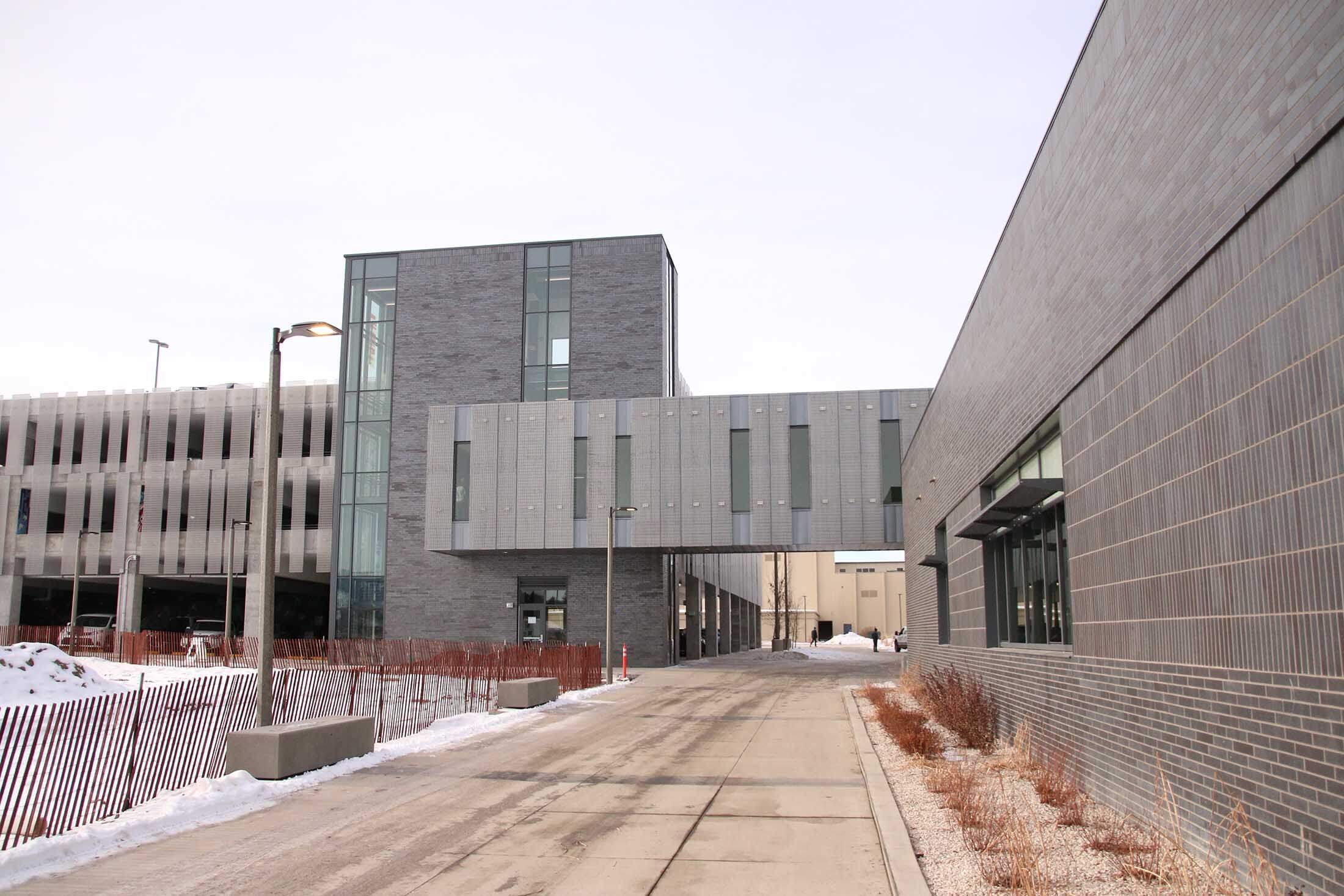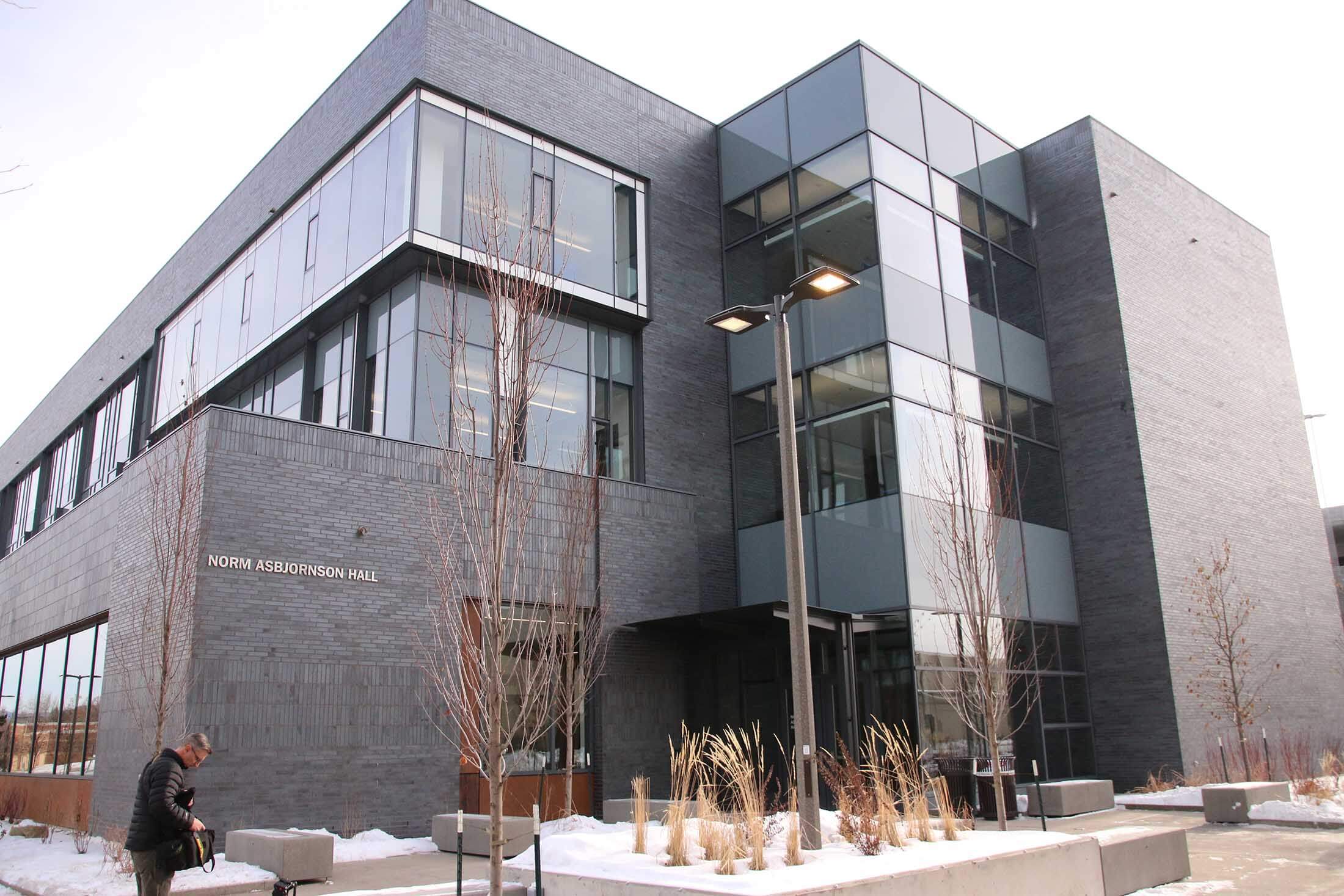Project Detail
MSU Norm Asbjornson Hall
Educational
Location: Bozeman, Montana
The College of Engineering building at Montana State University wears a mighty badge of honor. Norm Asbjornson Hall is one of ten buildings in the state of Montana to be certified LEED Platinum, the U.S. Green Building Council’s highest certification. The building also meets the Montana High Performance Building Standards.
The hall’s namesake, a Montana native and MSU graduate, founded AAON, a publicly traded HVAC manufacturer based in Tulsa, Okla. The project was a result of a generous donation from Mr. Asbjornson. His desire for the building was for it to feature innovative designs, particularly ones that highlighted the mechanical systems. ACE is proud to have provided the mechanical, electrical, plumbing, and fire protection systems design on this very Montana building. The building HVAC system consists of the following:
• A hybrid ground-source heat pump system including 104 geothermal wells as well as a connection to the central steam plant to provide heat to the geothermal loop during the coldest parts of the winter. This hybrid system allows the steam system to handle the cold weather peaks and allows a reduced geothermal well quantity.
• Heat pumps utilize the newest variable speed compressor technology.
• Natural ventilation is used for cooling in many areas of the building.
• The project includes an atrium smoke exhaust system, which also acts as a natural ventilation assist.
• Air-quality monitoring is used in classrooms, shops, and labs to modulate the fresh air quantities required.
• A dedicated variable air volume outdoor air system.
• A transpired solar collector for outdoor air pre-heating, when needed.
Design to maximize the use of sunlight was achieved through daylight harvesting and thermochromic glass, among other features. The building has a 250kw photovoltaic array, which is located on the roof. LED lighting with a full lighting control system was used throughout. A water use reduction of 41 percent was achieved through the selection of low-flow indoor plumbing fixtures.
